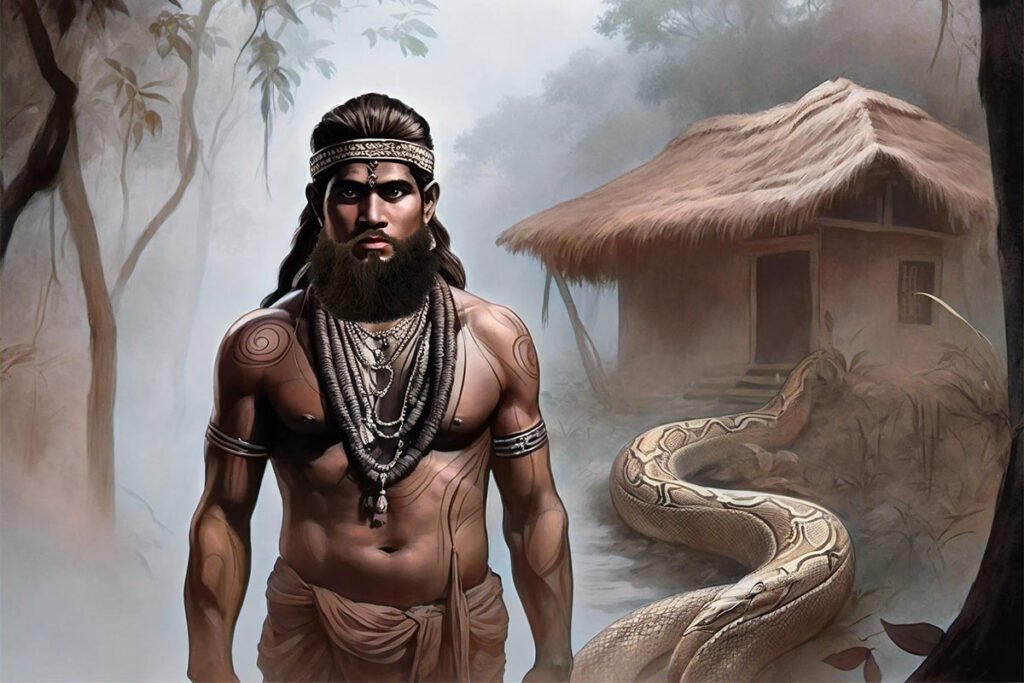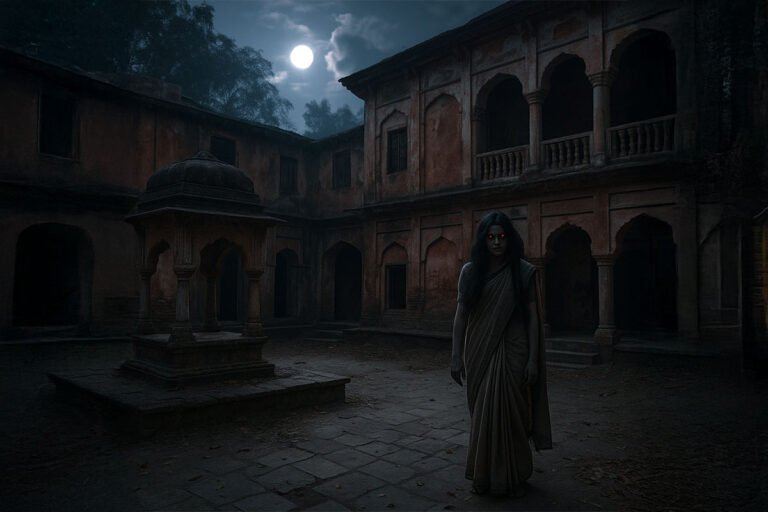In a serene village in Odisha, where children played with sticks and mud, and old men told stories under the banyan tree, there existed a legend, a tale whispered in hushed tones – the story of Kanduri, the snake charmer.
Kanduri was a man of mystery. With a disheveled beard, deep-set eyes that hid a world of secrets, and an always-present flute that he played melodies on, he lived on the outskirts of the village. His hut was adorned with trinkets made of snake bones, and his most distinguishing feature was the pattern of a cobra tattooed around his wrist.
As the sun set and the village lit its lanterns, a familiar, haunting tune from Kanduri’s flute would drift through the air. His melodies attracted snakes from the nearby forest, mesmerizing them, and he claimed to hold the cure for their venomous bites.
But whispers floated in the shadows, tales of his transformations, how he became a snake at night, preying on the villagers.
Among those who heard these whispers was a young couple, Rama and Sita. They had recently wed and built their humble abode near the thickets of the forest. Their love was the talk of the village, as pure and steady as the waters of the nearby river.
One evening, when the moon was but a crescent in the sky and the world was drenched in silver, Rama heard a hissing sound. Drawn by curiosity and a sense of protection for his beloved Sita, he stepped outside. Moments turned into hours, and Sita, now anxious, stepped out to find Rama on the ground, a bite mark on his ankle, and the dark silhouette of a cobra slithering away.
Panicking, Sita remembered the tales of Kanduri and his supposed cures. Running through the cold night, her feet barely touching the ground, she reached the snake charmer’s abode. But the scene that greeted her was not what she expected. Kanduri, with his flute beside him, had scales covering his body. His eyes, snake-like, looked at her with a cold hunger.
Realization dawned upon her, and thinking quickly, she pretended to plead for Rama’s life, speaking of a rare gem she possessed which she would trade for the antidote. As Kanduri momentarily transformed back, captivated by the idea of the gem, Sita seized the opportunity. She grabbed a knife and, with a swift motion, sliced off the tail of the snake, rendering him powerless.
Breathing heavily, she carried the unconscious Rama to the village, to the village Vaidya‘s house, who, after tense moments, managed to save him.
When the villagers heard the tale, anger rose like a tide. They wanted justice; they wanted to see Kanduri burn. But Sita, with Rama beside her, spoke words of wisdom and compassion, convincing them that banishing Kanduri would be punishment enough.
Kanduri, now a cursed creature, half-man and half-snake, was forced into the depths of the forest, never to return.
Back in their hut, Rama held Sita close, the two of them a beacon of love and hope in a village that had seen too much darkness. And in the years that followed, when children played and old men gathered under the banyan tree, they spoke not of the fearsome snake charmer but of Sita’s courage, intelligence, and the boundless love she held for Rama.








